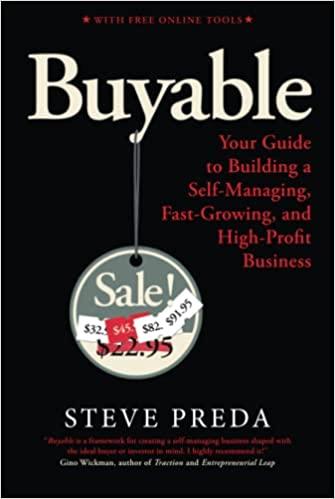Answered step by step
Verified Expert Solution
Question
1 Approved Answer
The biopharma industry is facing significant challenges to their existing business models because of expiring drug patents, declining risk tolerance of venture capitalists and other






The biopharma industry is facing significant challenges to their existing business models because of expiring drug patents, declining risk tolerance of venture capitalists and other investors, and increasing complexity in translational medicine. In response to these challenges, new alternative investment companies have emerged to bridge the biopharma funding gap by purchasing economic interests in drug royalty streams. Such purchases allow universities and biopharma companies to monetize their intellectual property, creating greater financial flexibility for them while giving investors an opportunity to participate in the life sciences industry at lower risk. Royalty Pharma is a privately owned alternative investment company that focuses on the acquisition of these pharmaceutical royalty interests. The company invests in products after regulatory approval and, more recently, also in the late stages of clinical trials. By the end of 2013, its portfolio consisted of royalty interests in 39 approved and marketed biopharmaceutical products, and 2 products in clinical trials and/or under review by the FDA and/or EMA. With such a large portfolio diversified across multiple therapeutic indications, it is the global leader in dedicated royalty investment entities. In this case study, we analyze Royalty Pharma's unique financing structure and business model. Problem 7a.i 0.0/0.25 points (graded) Suppose Royalty Pharma's portfolio consists of equally- weighted royalty interests in 40 approved and marketed biopharmaceutical products. Assume each royalty stream has an annualized expected return of 6.5%, and return standard deviation of 20%. If the correlation amongst projects is 10%, then what is the annualized expected return of the portfolio. (Note: Your answers should be numbers in percentage form. Do not enter '%'.) E[Rp] = % Problem 7a.ji 0.0/0.25 points (graded) Still assuming that the correlation amongst projects is 10%, what is the return standard deviation of the portfolio. (Note: Your answers should be numbers in percentage form. Do not enter '%'.) SD (Rp) = = % If the distribution of portfolio returns is given by a normal distribution, then what is the probability that Royalty Pharma's equity holders suffer a loss greater than 10%? Assume an approximately even mixture of debt and equity: $4.2 billion and $4.0 billion, respectively. In addition, for simplicity, assume the yield on Royalty Pharma's debt is 0%. (Note: Your answer should be a number in percentage form. Do not enter '%'.) % Hint: What is Royalty Pharma's leverage ratio? Also, the area in the left tail of the standard normal distribution can be found using an online calculator such as Wolfram Alpha. Problem 7c 0.0/0.25 points (graded) What is the probability that Royalty Pharma's equity holders suffer a loss greater than 10% if the correlation amongst projects turns out to be 40%, instead of 10%? % The biopharma industry is facing significant challenges to their existing business models because of expiring drug patents, declining risk tolerance of venture capitalists and other investors, and increasing complexity in translational medicine. In response to these challenges, new alternative investment companies have emerged to bridge the biopharma funding gap by purchasing economic interests in drug royalty streams. Such purchases allow universities and biopharma companies to monetize their intellectual property, creating greater financial flexibility for them while giving investors an opportunity to participate in the life sciences industry at lower risk. Royalty Pharma is a privately owned alternative investment company that focuses on the acquisition of these pharmaceutical royalty interests. The company invests in products after regulatory approval and, more recently, also in the late stages of clinical trials. By the end of 2013, its portfolio consisted of royalty interests in 39 approved and marketed biopharmaceutical products, and 2 products in clinical trials and/or under review by the FDA and/or EMA. With such a large portfolio diversified across multiple therapeutic indications, it is the global leader in dedicated royalty investment entities. In this case study, we analyze Royalty Pharma's unique financing structure and business model. Problem 7a.i 0.0/0.25 points (graded) Suppose Royalty Pharma's portfolio consists of equally- weighted royalty interests in 40 approved and marketed biopharmaceutical products. Assume each royalty stream has an annualized expected return of 6.5%, and return standard deviation of 20%. If the correlation amongst projects is 10%, then what is the annualized expected return of the portfolio. (Note: Your answers should be numbers in percentage form. Do not enter '%'.) E[Rp] = % Problem 7a.ji 0.0/0.25 points (graded) Still assuming that the correlation amongst projects is 10%, what is the return standard deviation of the portfolio. (Note: Your answers should be numbers in percentage form. Do not enter '%'.) SD (Rp) = = % If the distribution of portfolio returns is given by a normal distribution, then what is the probability that Royalty Pharma's equity holders suffer a loss greater than 10%? Assume an approximately even mixture of debt and equity: $4.2 billion and $4.0 billion, respectively. In addition, for simplicity, assume the yield on Royalty Pharma's debt is 0%. (Note: Your answer should be a number in percentage form. Do not enter '%'.) % Hint: What is Royalty Pharma's leverage ratio? Also, the area in the left tail of the standard normal distribution can be found using an online calculator such as Wolfram Alpha. Problem 7c 0.0/0.25 points (graded) What is the probability that Royalty Pharma's equity holders suffer a loss greater than 10% if the correlation amongst projects turns out to be 40%, instead of 10%? %
Step by Step Solution
There are 3 Steps involved in it
Step: 1

Get Instant Access to Expert-Tailored Solutions
See step-by-step solutions with expert insights and AI powered tools for academic success
Step: 2

Step: 3

Ace Your Homework with AI
Get the answers you need in no time with our AI-driven, step-by-step assistance
Get Started


